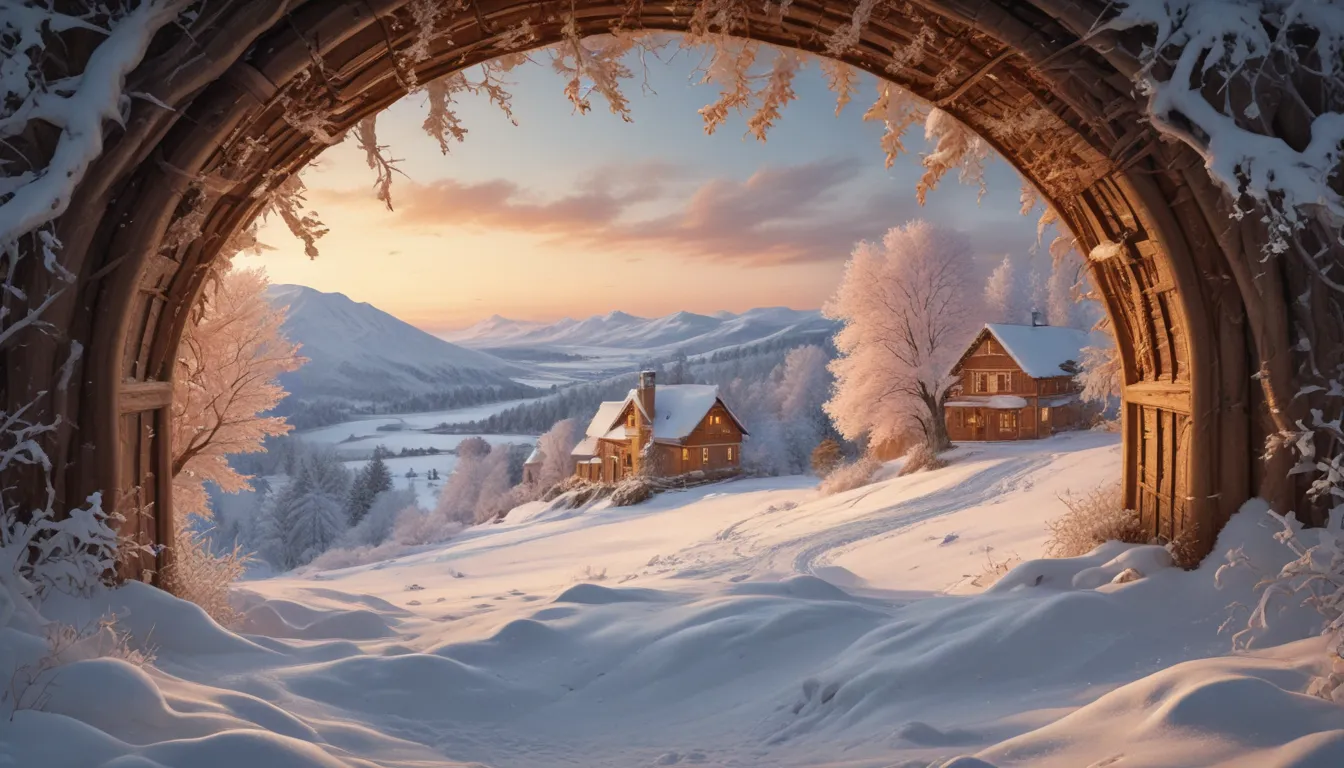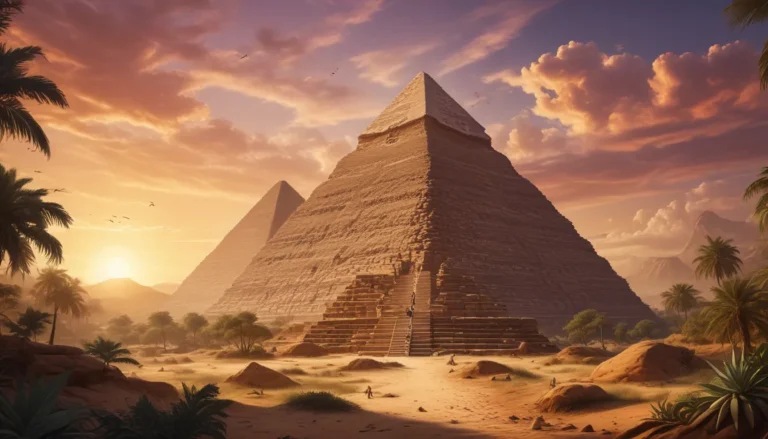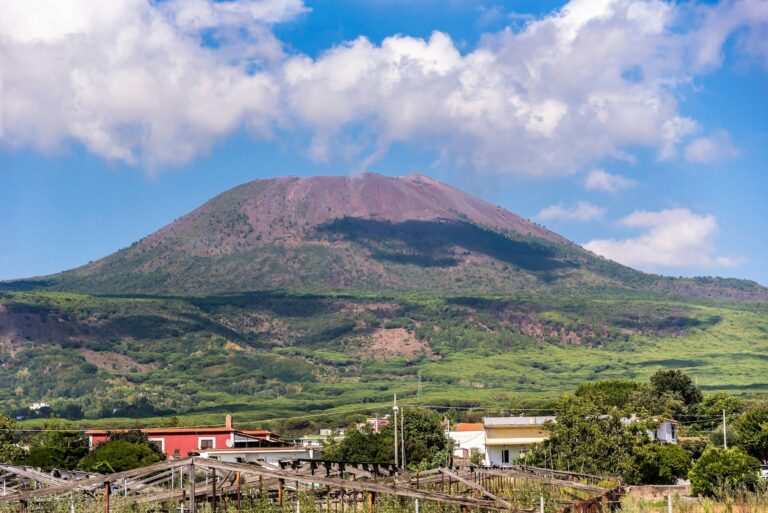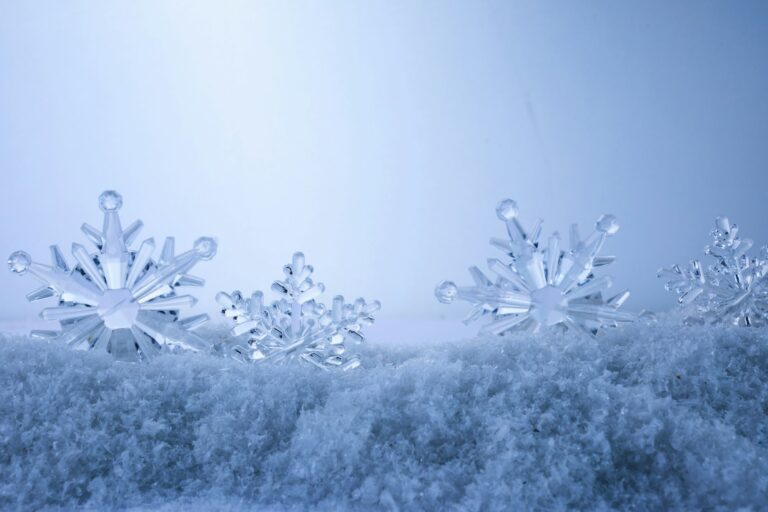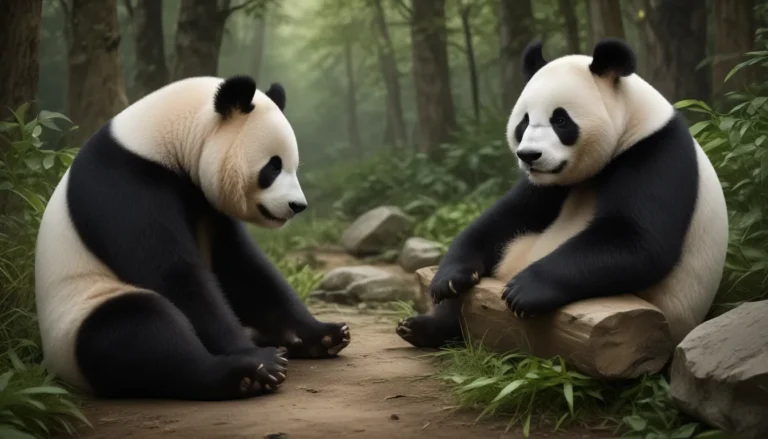The pictures we use in our articles might not show exactly what the words say. We choose these pictures to make you interested in reading more. The pictures work together with the words but don’t take their place. The words still tell you the important facts.
Winter is a season that captivates us with its beauty, showcases the resilience of wildlife, and brings people together in celebration. From the delicate snowflakes to the enchanting Northern Lights, winter offers a multitude of wonders waiting to be explored and appreciated. So, bundle up, embrace the chill, and let the magic of winter unfold before your eyes.
The Science Behind Snowflakes
Snowflakes are nature's own work of art, each one unique in its crystalline structure and design. The formation of snowflakes is a complex process involving the freezing of water vapor in the atmosphere. The average snowflake has six sides or branches, reflecting the hexagonal symmetry of water molecules. Different types of snowflakes are formed based on temperature, humidity, and atmospheric conditions.
Mesmerizing Northern Lights
The Northern Lights, also known as the Aurora Borealis, illuminate the winter skies in polar regions with a spectacular light show. This phenomenon occurs when charged particles from the Sun collide with Earth's magnetic field. The Northern Lights can appear in various colors like green, pink, purple, and blue, depending on solar activity and night sky clarity.
Welcoming the Winter Solstice
The winter solstice marks the shortest day and the longest night of the year in the Northern Hemisphere, typically occurring around December 21st. It signifies the official beginning of winter and is celebrated in various cultures around the world with rituals, festivals, and gatherings. Stonehenge in England is renowned for its alignment with the winter solstice sunrise.
Animal Hibernation in Winter
Winter brings about unique survival strategies for many animals, with some species opting for hibernation to conserve energy during the cold months. Animals like bears, groundhogs, and bats enter a state of hibernation, lowering their body temperature, decreasing metabolic rate, and entering a deep sleep-like state to survive on stored body fat until spring arrives.
Spectacular Winter Migrations
Winter is a time of incredible migrations as animals travel vast distances to seek warmer climates, food sources, or breeding grounds. Birds like geese, ducks, swans, and monarch butterflies embark on remarkable journeys spanning thousands of miles, showcasing their instinctual navigation skills and adaptive abilities.
Vibrant Winter Festivals Worldwide
Winter is a season filled with vibrant festivals and celebrations from around the world, bringing communities together to embrace the spirit of the season. From Diwali in India to Christmas and New Year celebrations, each culture has unique traditions involving colorful decorations, feasts, music, dancing, and gift exchanges, creating cherished memories during the chilly winter months.
Hanukkah: A Festival of Lights
Hanukkah, also known as the Festival of Lights, is a Jewish holiday celebrated in December. It commemorates the rededication of the Second Temple in Jerusalem and the miraculous oil that lasted for eight days. Special menorahs with nine branches are lit during Hanukkah, symbolizing the duration the oil burned.
New Year’s Eve Celebrations
New Year's Eve, observed on December 31st, marks the transition from one year to the next with reflection, celebration, and setting new goals. Traditions like fireworks displays, parties, and countdowns are common as people gather with loved ones to bid farewell to the old year and welcome the new one with excitement.
Embracing Winter Sports
Winter offers a range of exciting sports and activities like skiing, snowboarding, ice skating, sledding, and ice hockey that capitalize on snowy landscapes. Engaging in winter sports not only provides thrilling experiences but also promotes physical fitness, coordination, and balance, making it a wonderful way to embrace the season.
The Winter Olympics, held every four years, showcases athletes from around the world competing in various winter sports disciplines, including skiing, snowboarding, figure skating, and bobsledding.
Frequently Asked Questions (FAQs)
What are some popular winter destinations?
- Swiss Alps for skiing
- Lapland in Finland for the Northern Lights
- Quebec City in Canada for the Winter Carnival
What are the health benefits of winter activities?
Winter activities improve cardiovascular fitness, strengthen muscles, boost mood, mental well-being, and provide an opportunity to connect with nature.
Is the air cleaner during winter?
While it's commonly believed that winter air is cleaner due to reduced pollution levels, winter inversions can trap pollutants close to the ground, affecting air quality in some areas.
Are there winter festivals besides Christmas and New Year’s Eve?
Yes, several winter festivals are celebrated globally, including the Sapporo Snow Festival in Japan, the Harbin Ice and Snow Festival in China, and the Carnival of Venice in Italy.
How can I stay warm during winter?
Dress in layers, wear insulated clothing, hats, and gloves, drink warm beverages, eat hot meals, and use blankets and heaters to create a comfortable indoor environment.
Winter is a time of wonder and magic, offering a plethora of experiences to explore and enjoy. From the dazzling display of the Northern Lights to the intricate beauty of snowflakes, winter beckons us with its charm and delights. So, embrace the season, make memories, and let the magic of winter unfold before you.
